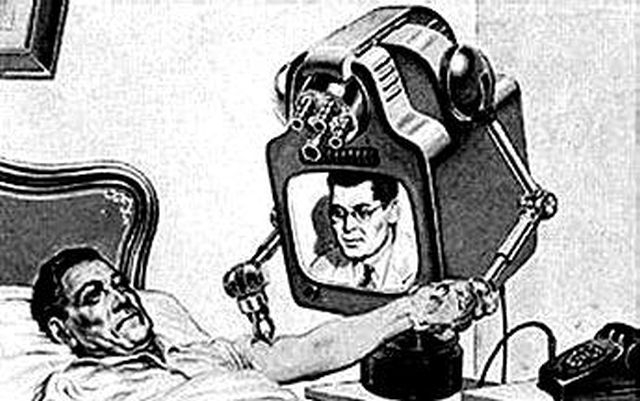How Teledoctors Are Transforming Modern Health Care
How Teledoctors Are Transforming Modern Health Care
Blog Article
Teledoctors: Bridging the Space Between Individuals and Doctor
The development of teledoctors represents a significant shift in the healthcare landscape, offering services to long-standing ease of access problems dealt with by individuals and providers alike. By integrating telemedicine into standard techniques, health care systems can get to underserved and remote populations, providing critical clinical consultations without the obstacles of distance and travel.
Rise of Telemedicine

The surge of telemedicine is likewise sustained by the need for economical medical care. Health care systems globally are under pressure to lower expenditures while preserving quality treatment, and telemedicine supplies a feasible option. By decreasing the demand for physical visits, telemedicine decreases overhanging prices for healthcare facilities and eventually decreases the monetary concern on patients.
Furthermore, the COVID-19 pandemic functioned as a catalyst, speeding up the adoption of telemedicine techniques. Social distancing actions and the need to lessen exposure threat demanded a change in the direction of remote consultations, triggering governing bodies to sustain and adjust telehealth solutions. This change has not just tested telemedicine's efficacy however additionally its possible to advance as a staple component of contemporary medical care systems.
Benefits for People
As telemedicine proceeds to reshape health care shipment, clients stand to get substantially from this makeover. Mainly, telemedicine boosts ease of access, enabling clients in underserved or remote locations to speak with doctor without the requirement for comprehensive traveling. This is specifically helpful for individuals with wheelchair concerns or those staying in country areas where health care facilities may be scarce. Telemedicine likewise uses people the comfort of getting clinical advice and therapy from the convenience of their homes, decreasing the time and price related to taking a trip to a healthcare facility.
Moreover, telemedicine supports continuity of care by helping with routine follow-ups and monitoring, which are essential for taking care of persistent conditions. Individuals can conveniently arrange consultations and access health care solutions outside conventional workplace hours, accommodating their busy way of lives. This flexibility leads to boosted person engagement and adherence to therapy plans, potentially leading to far better health and wellness outcomes.
In addition, telemedicine can assist minimize the danger of infection transmission, a concern increased by the COVID-19 pandemic. By minimizing the need for in-person check outs, patients can stay clear of crowded waiting spaces and decrease exposure to contagious ailments. Eventually, telemedicine equips patients by providing prompt, effective, and individualized medical care services.
Benefits for Carriers
For healthcare service providers, telemedicine provides significant benefits that boost the efficiency and reach of their technique. By leveraging electronic innovation, service providers can expand their solutions to a more comprehensive market, consisting of those in remote or underserved areas. This not just relieves geographical obstacles yet also optimizes individual retention and acquisition by making medical care extra easily accessible.
Another secret benefit is the decrease in above read this article prices. With telemedicine, the requirement for physical space lessens, allowing suppliers to save money on realty and operational costs. Furthermore, telemedicine helps with far better time administration by decreasing the need for travelling and enabling for more versatile organizing. This flexibility can bring about raised client consultations daily, thereby improving earnings possibility.
Telemedicine likewise fosters an extra joint atmosphere for healthcare suppliers. teledoctors. It allows smooth sharing of individual info among specialists, enhancing analysis accuracy and therapy results. In addition, electronic systems can integrate with electronic health and wellness documents (EHRs), boosting information accuracy and simplifying management jobs
Furthermore, telemedicine improves client complete satisfaction, which is critical for carrier track record and success. By providing hassle-free and timely care, companies can improve client loyalty and involvement, additionally reinforcing the provider-patient relationship.
Conquering Difficulties
While telemedicine uses numerous advantages for medical care carriers, it additionally provides obstacles that need mindful consideration. One substantial difficulty is making sure data personal privacy and safety. As client information is transferred electronically, the danger of data breaches rises, requiring durable cybersecurity steps. Medical care suppliers need to adhere to rigorous regulations like HIPAA to safeguard sensitive info, therefore requiring investment in safe and secure platforms and continuous personnel training.
Another difficulty is the digital divide, which can prevent accessibility to telemedicine services. Not all people have equivalent accessibility to the needed technology or web connection, specifically those in country or underserved locations. browse this site This difference can exacerbate existing health care inequalities, making it crucial for companies to check out different solutions, such as partnerships with area companies, to bridge this space.
In addition, there are constraints in carrying out checkups from another location. Particular conditions need in-person assessment, highlighting the demand for Check Out Your URL a crossbreed model that incorporates telemedicine with standard visits. Companies must navigate these challenges by establishing methods to identify when telemedicine is appropriate and ensuring seamless shifts in between in-person and virtual care.
Future of Medical Care
The future of health care is positioned for a transformative development, driven by the fast assimilation of modern technology and advancement. This not only improves client ease yet additionally broadens accessibility to medical care, specifically in underserved and country areas.
Expert system (AI) and maker discovering are also readied to play pivotal duties. These innovations can examine substantial amounts of data, providing anticipating understandings right into client health, boosting diagnostic precision, and personalizing therapy strategies. AI-driven devices can boost medical care service providers' abilities, bring about more educated decision-making and much better client end results.
Furthermore, wearable technology and Net of Clinical Points (IoMT) tools are reinventing patient interaction and aggressive health administration. These tools make it possible for constant health and wellness tracking, permitting very early detection of prospective issues and prompt interventions.
As these innovations remain to advance, they promise to develop a more effective, obtainable, and patient-centric healthcare system, ultimately linking the void in between clients and doctor. - teledoctors
Final Thought
Teledoctors are transforming healthcare by significantly enhancing accessibility and performance via remote assessments. This development supports individuals in underserved areas by offering timely clinical recommendations without requiring physical check outs, thus boosting individual engagement and connection of treatment. Doctor take advantage of a lot more reliable time management and boosted cooperation chances. In spite of challenges such as governing concerns and technical barriers, the future of health care shows up efficient and increasingly inclusive due to the assimilation of telemedicine into conventional treatment designs.

As telemedicine proceeds to reshape medical care distribution, individuals stand to acquire significantly from this change. Largely, telemedicine boosts access, enabling patients in remote or underserved locations to speak with health care service providers without the requirement for substantial travel. Telemedicine also provides patients the comfort of receiving clinical advice and therapy from the comfort of their homes, reducing the time and cost linked with traveling to a healthcare center.
Ultimately, telemedicine empowers clients by giving timely, reliable, and customized health care solutions.
Report this page